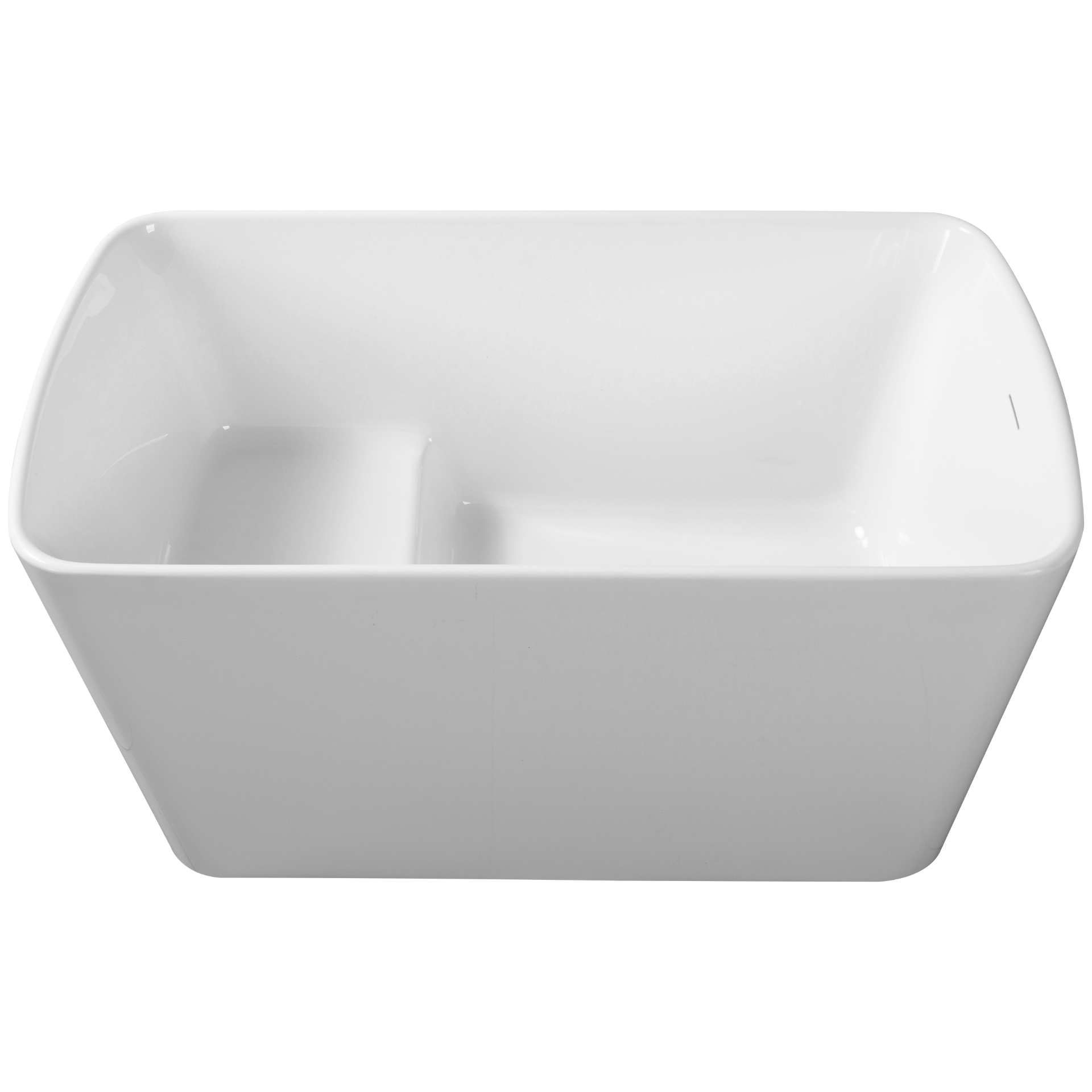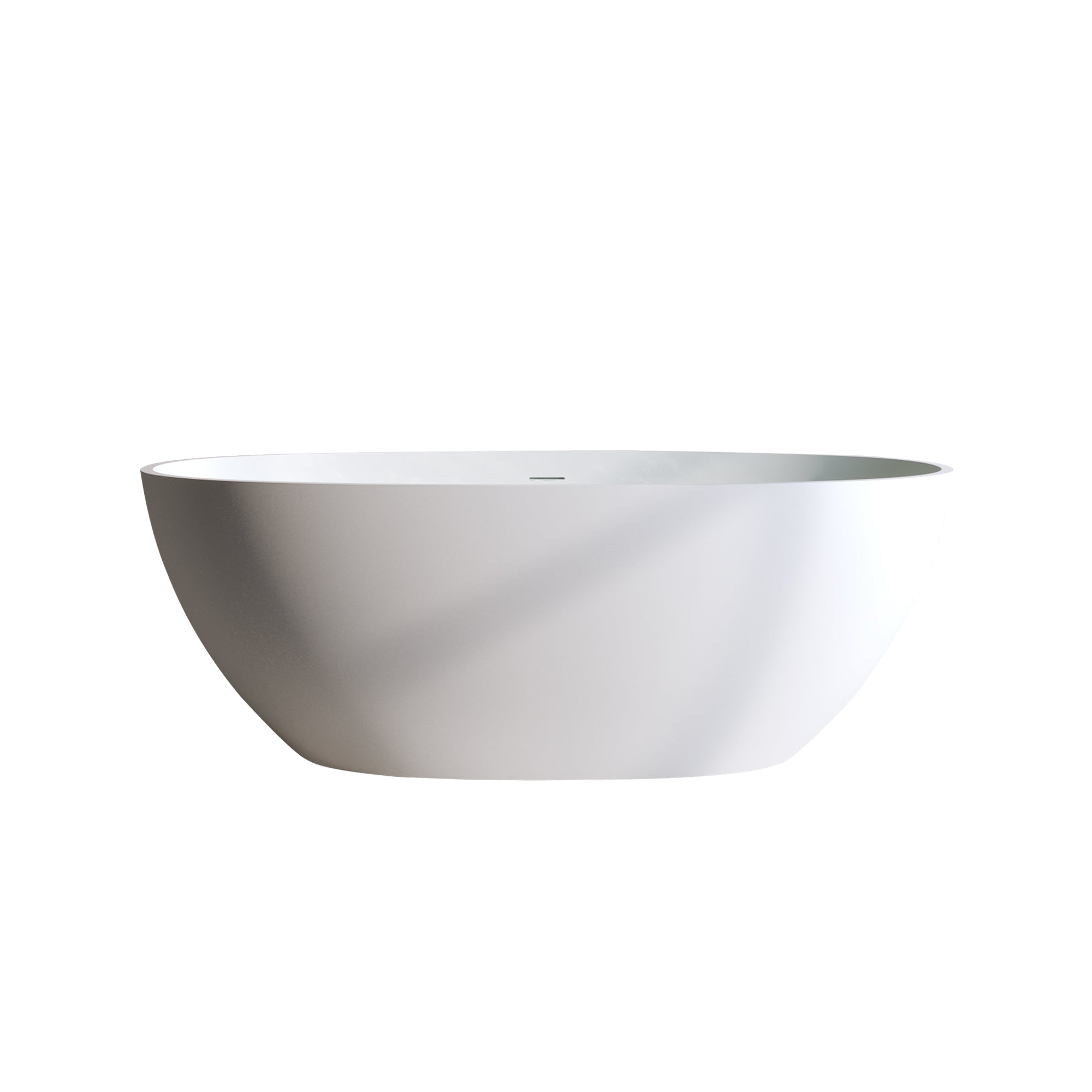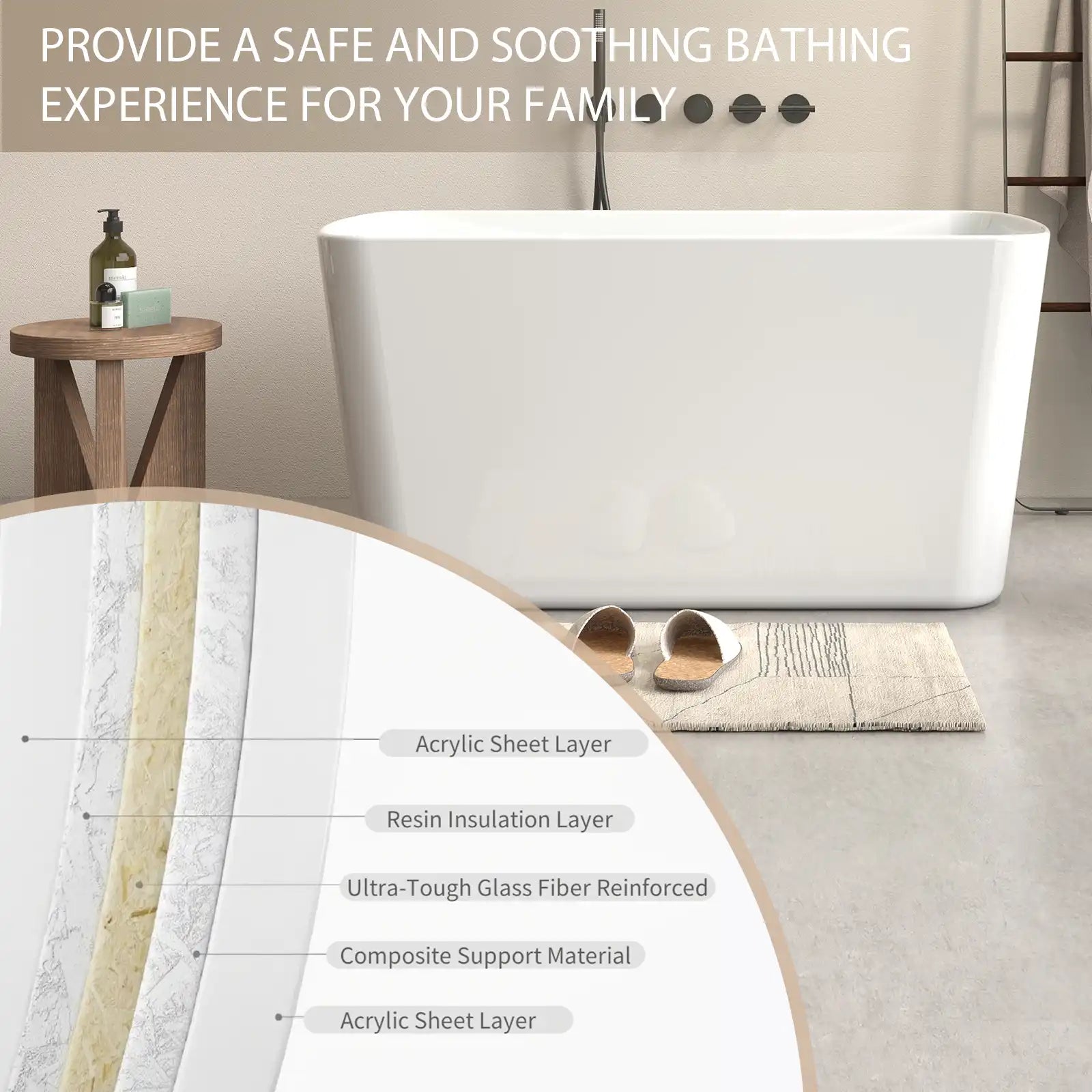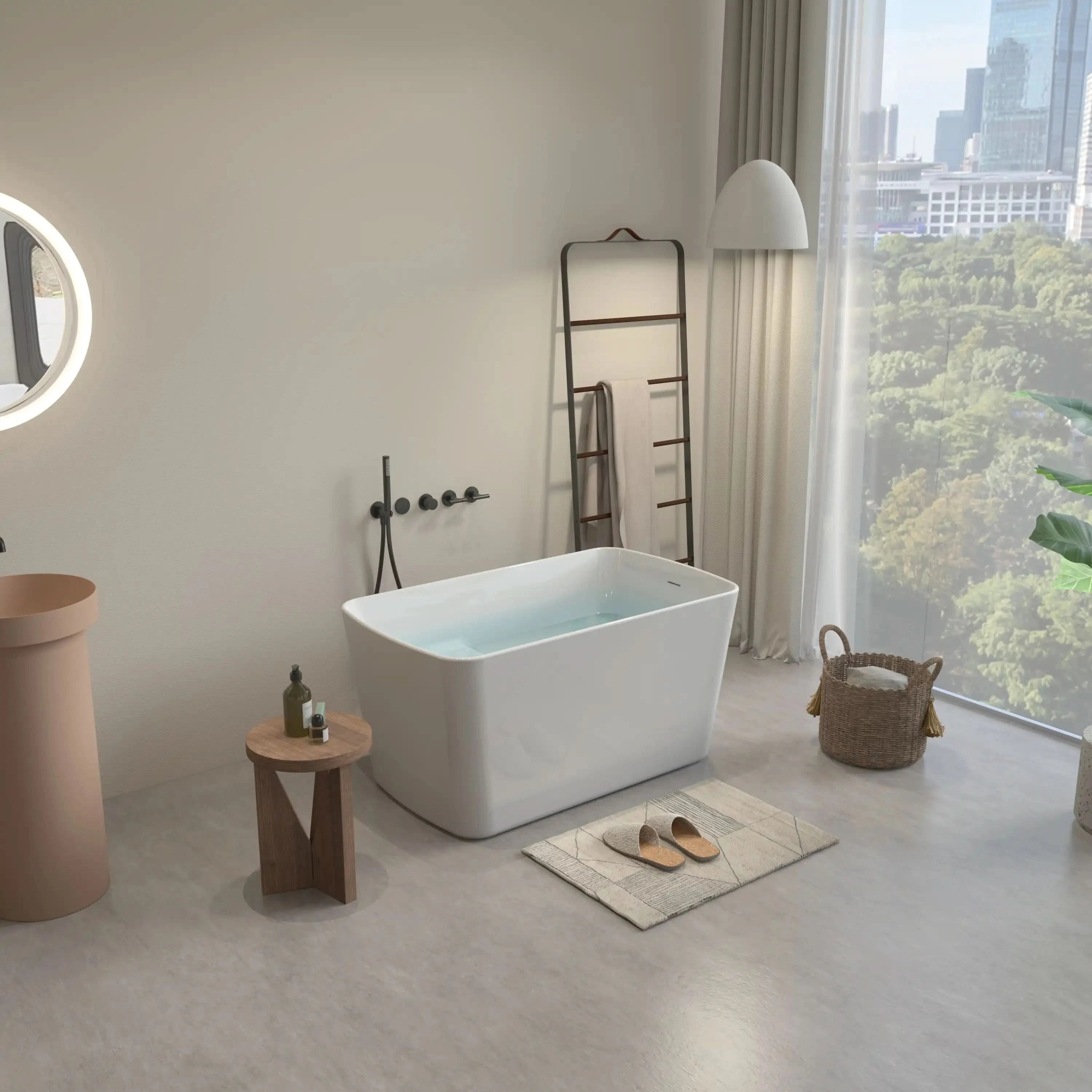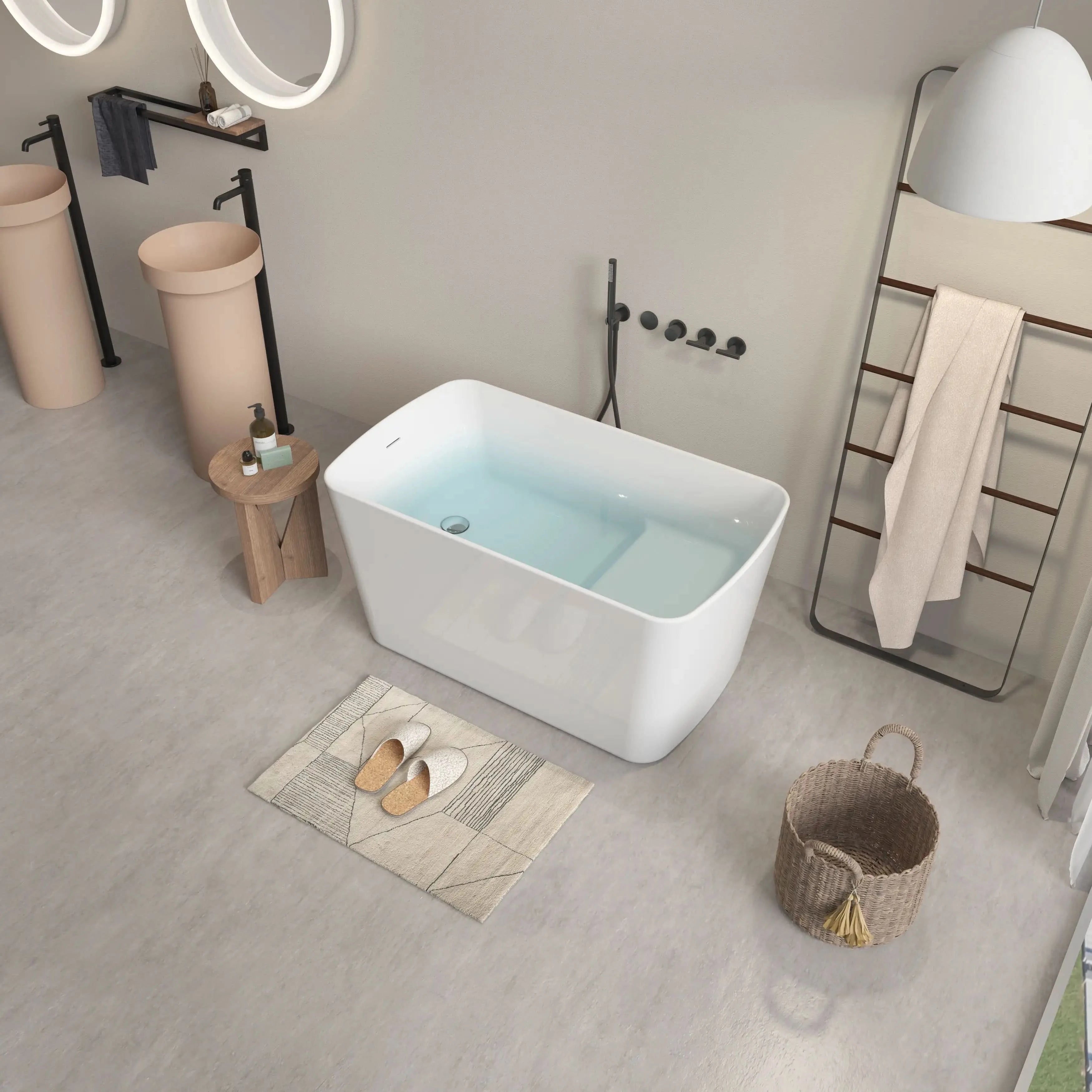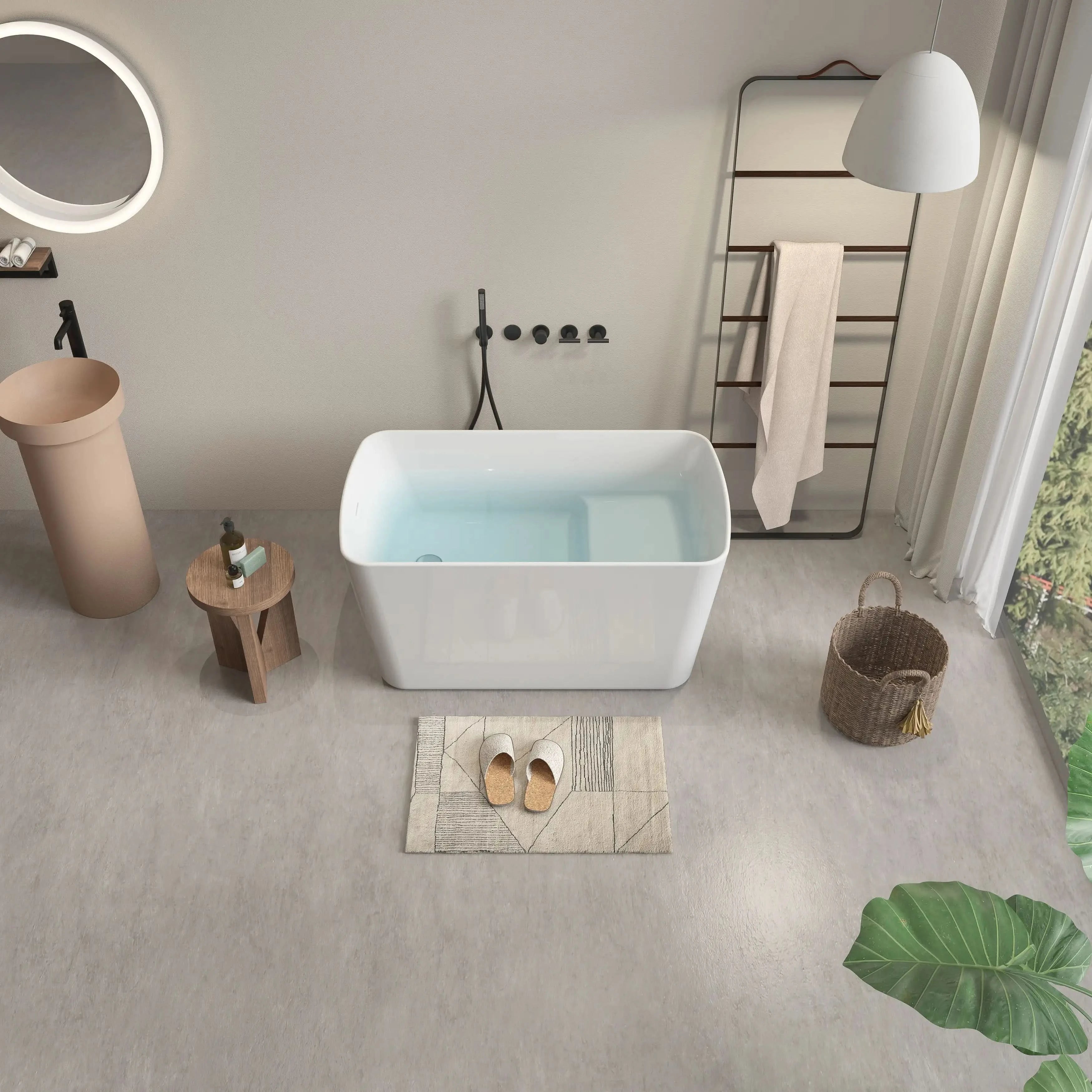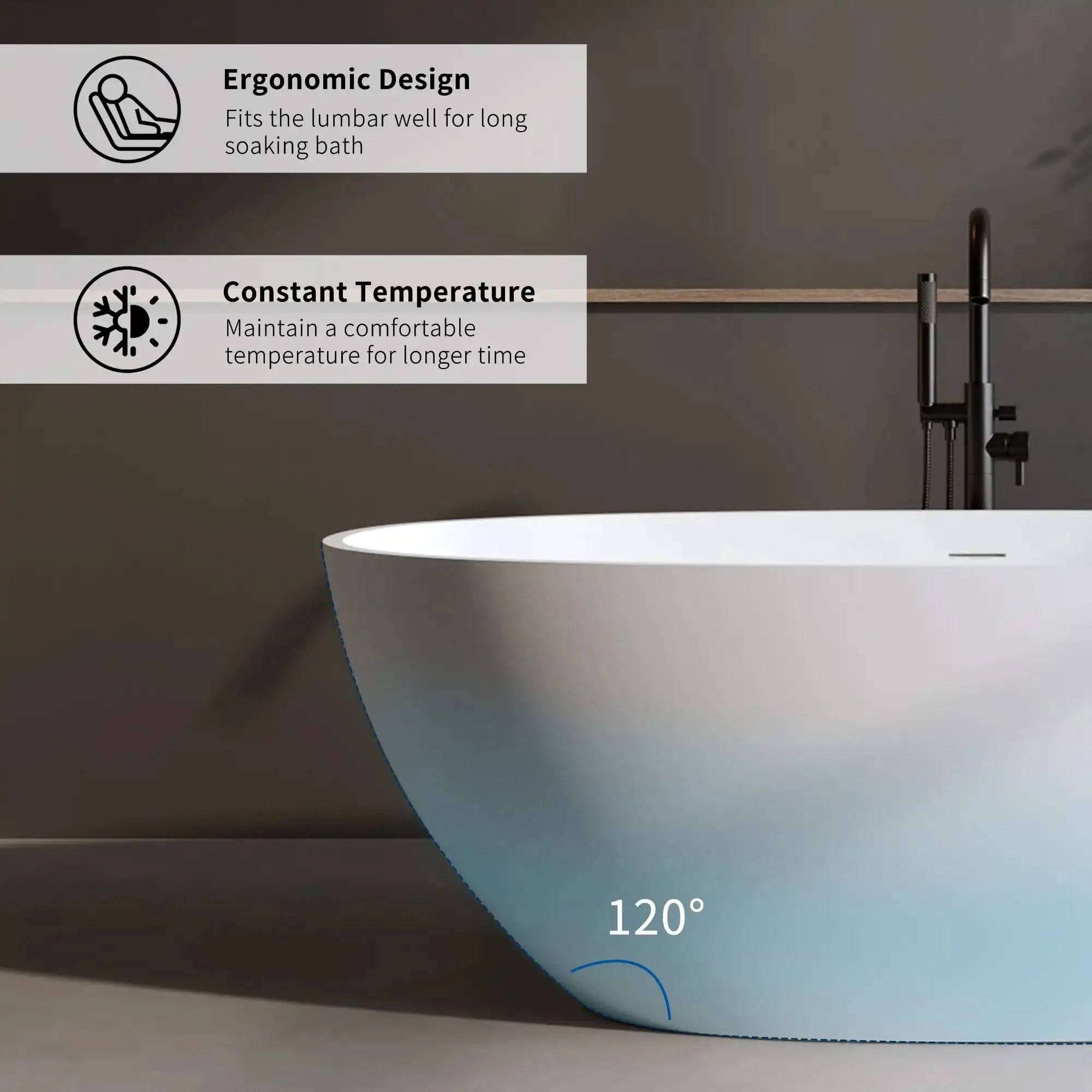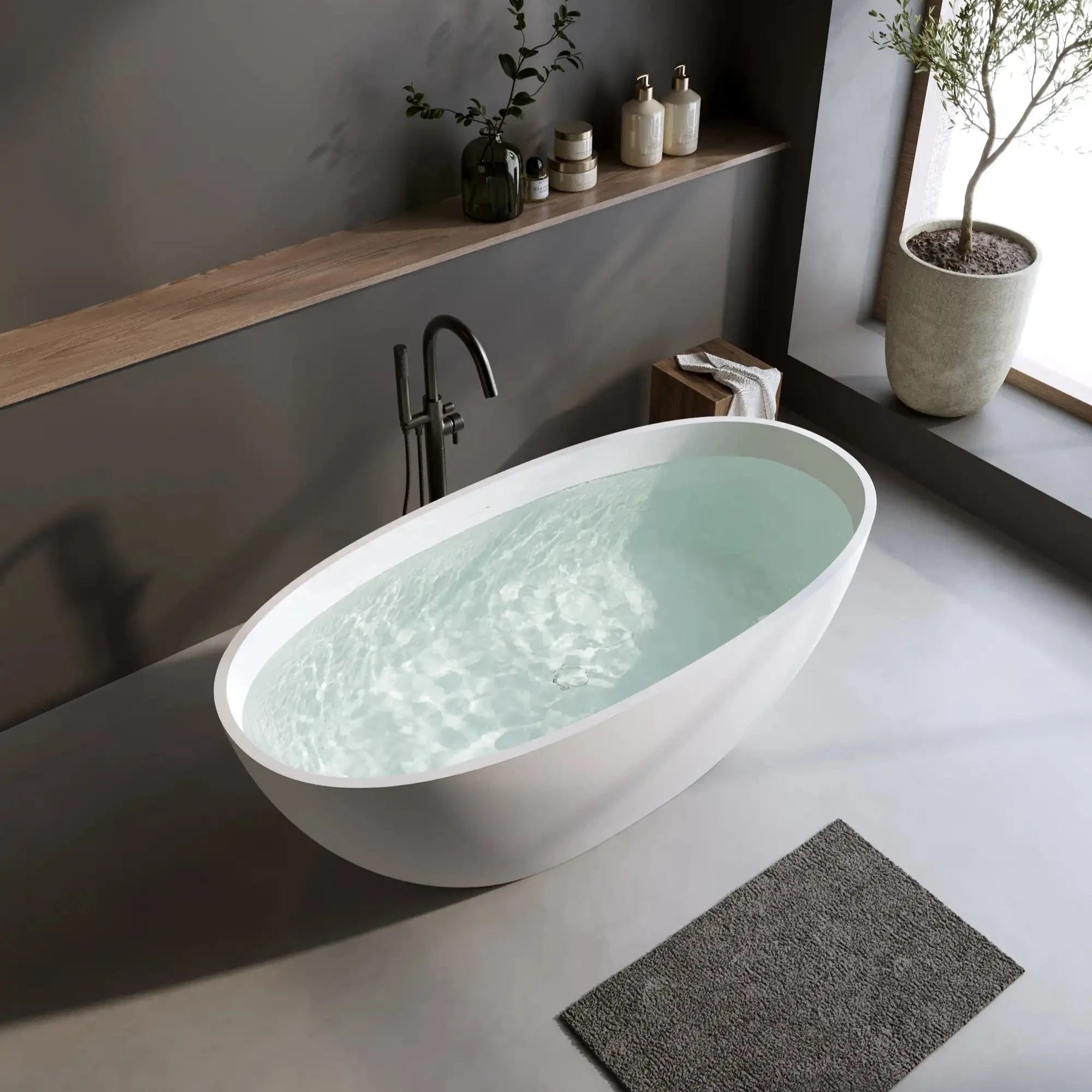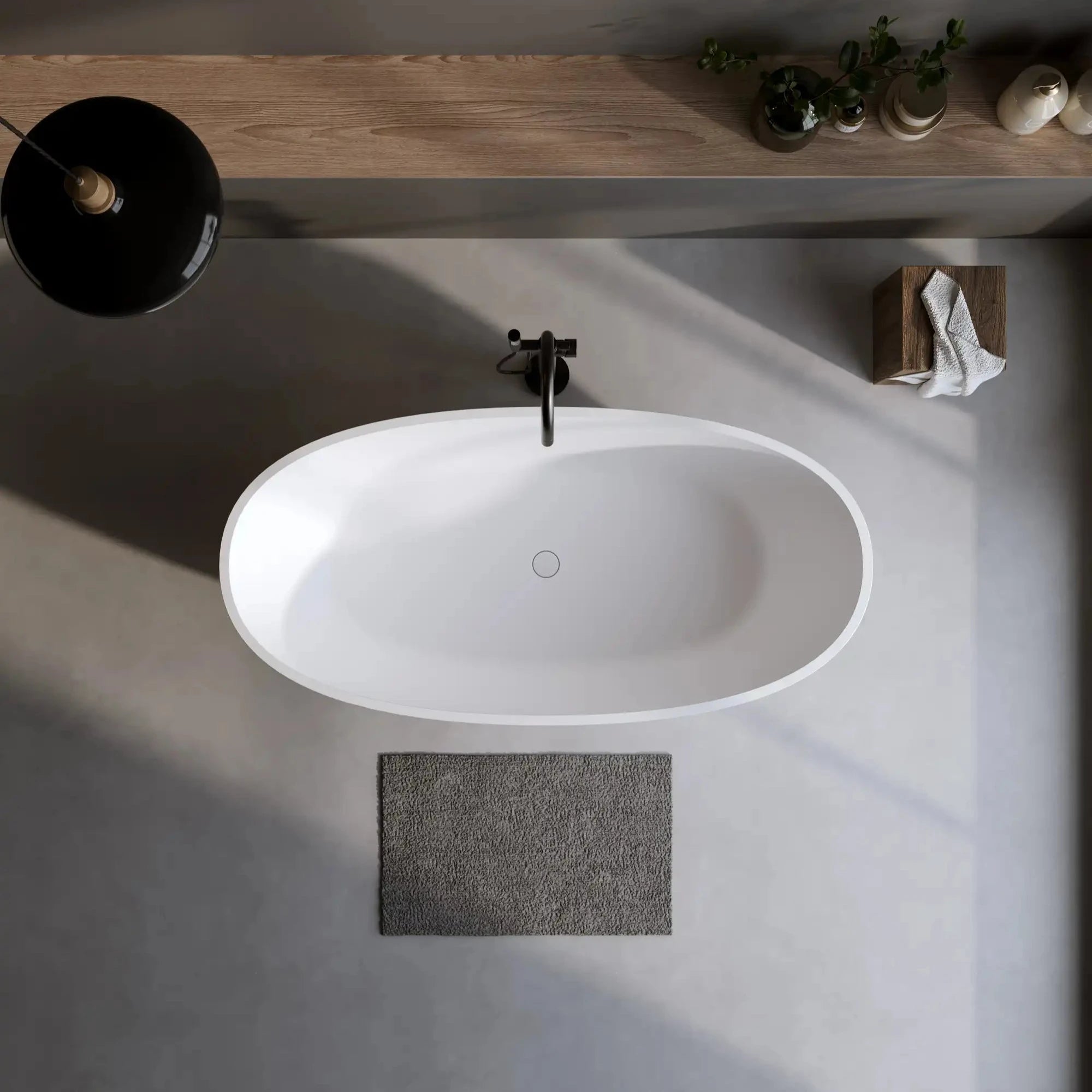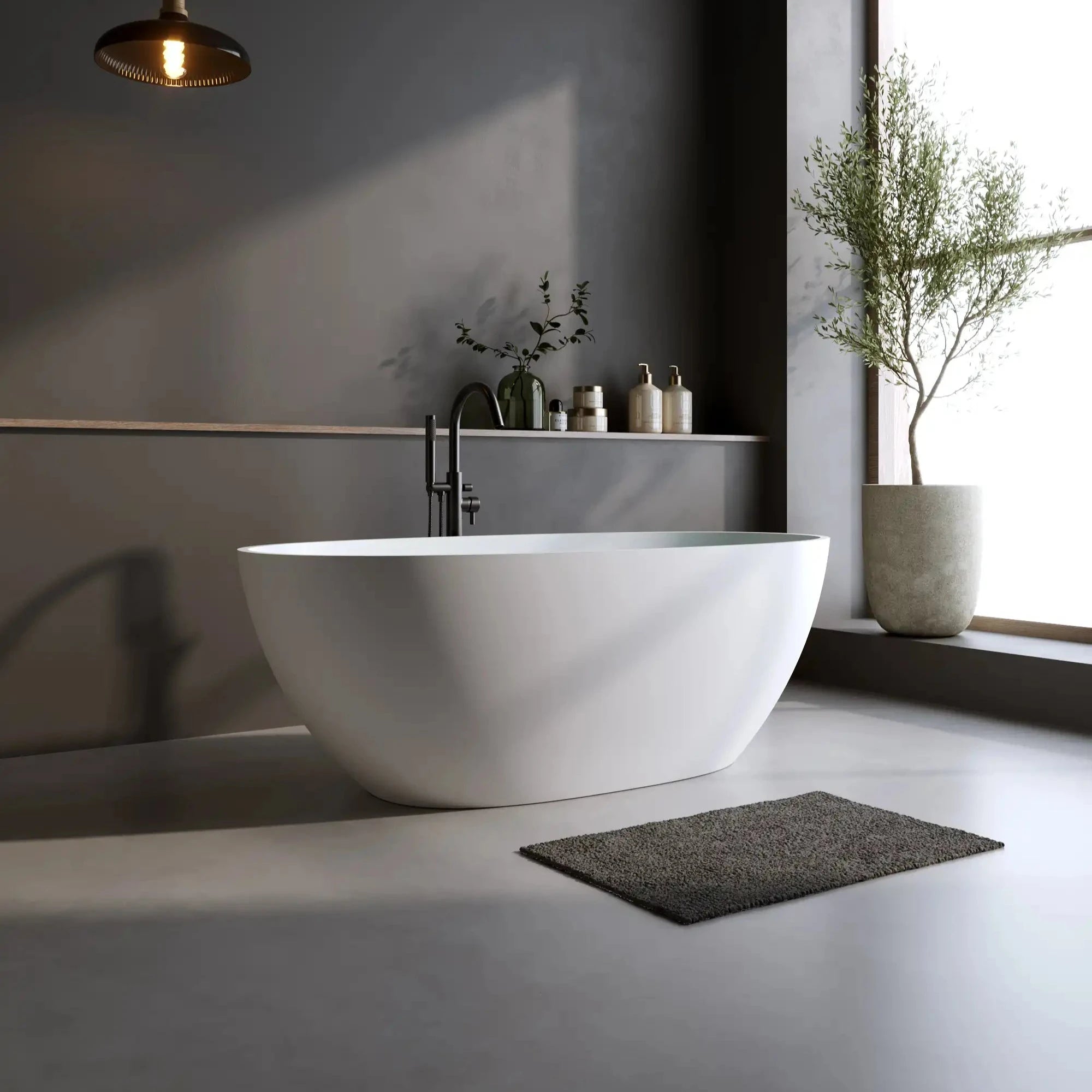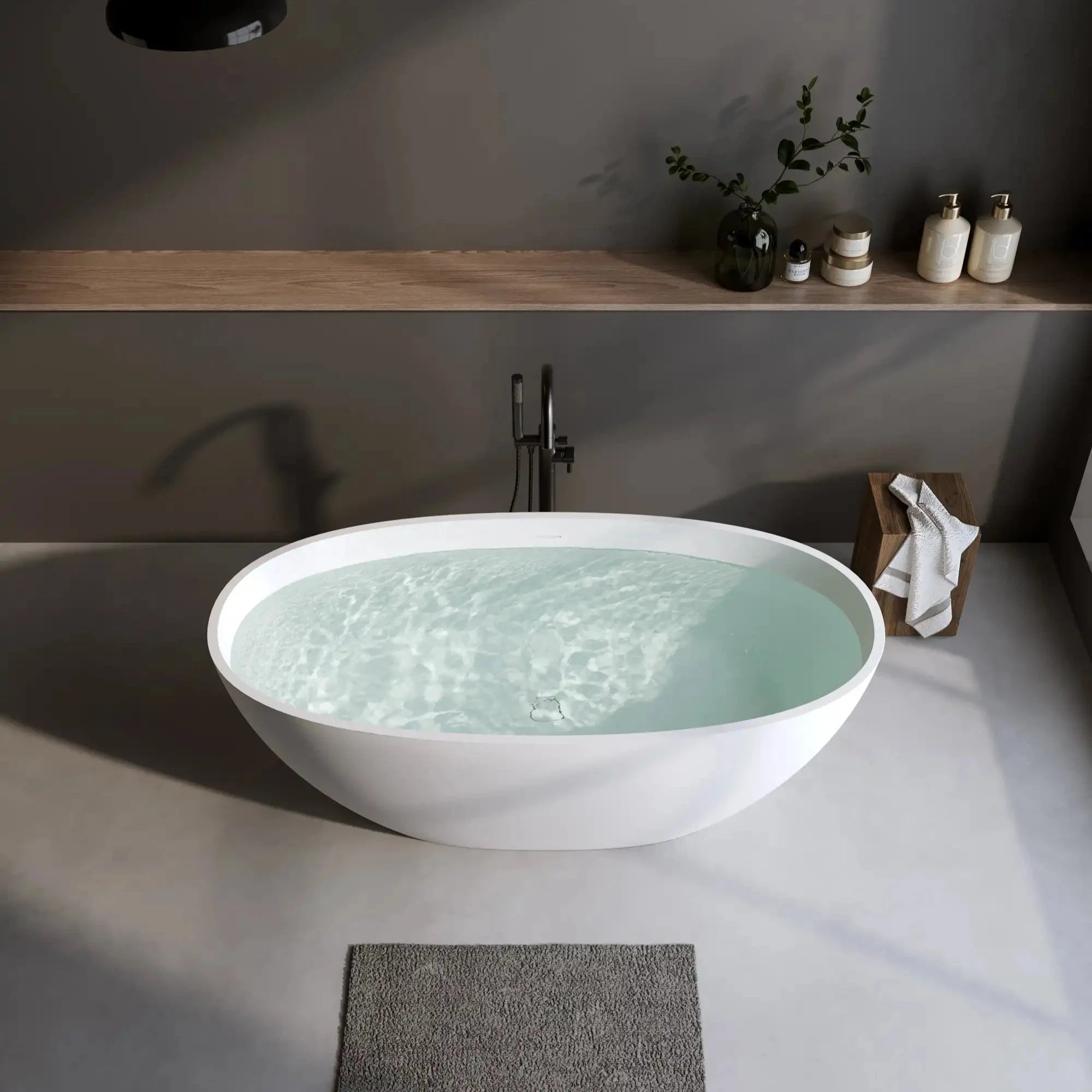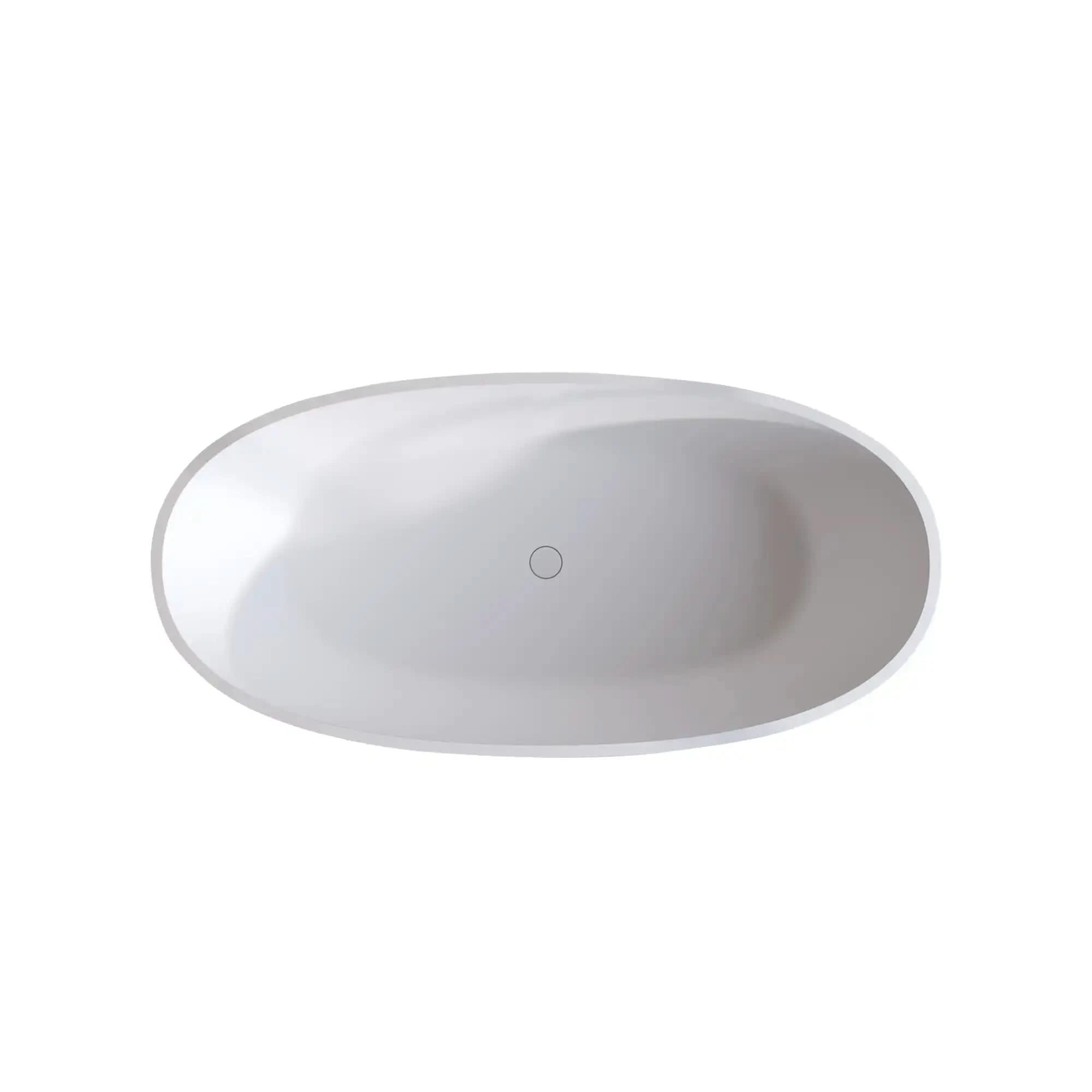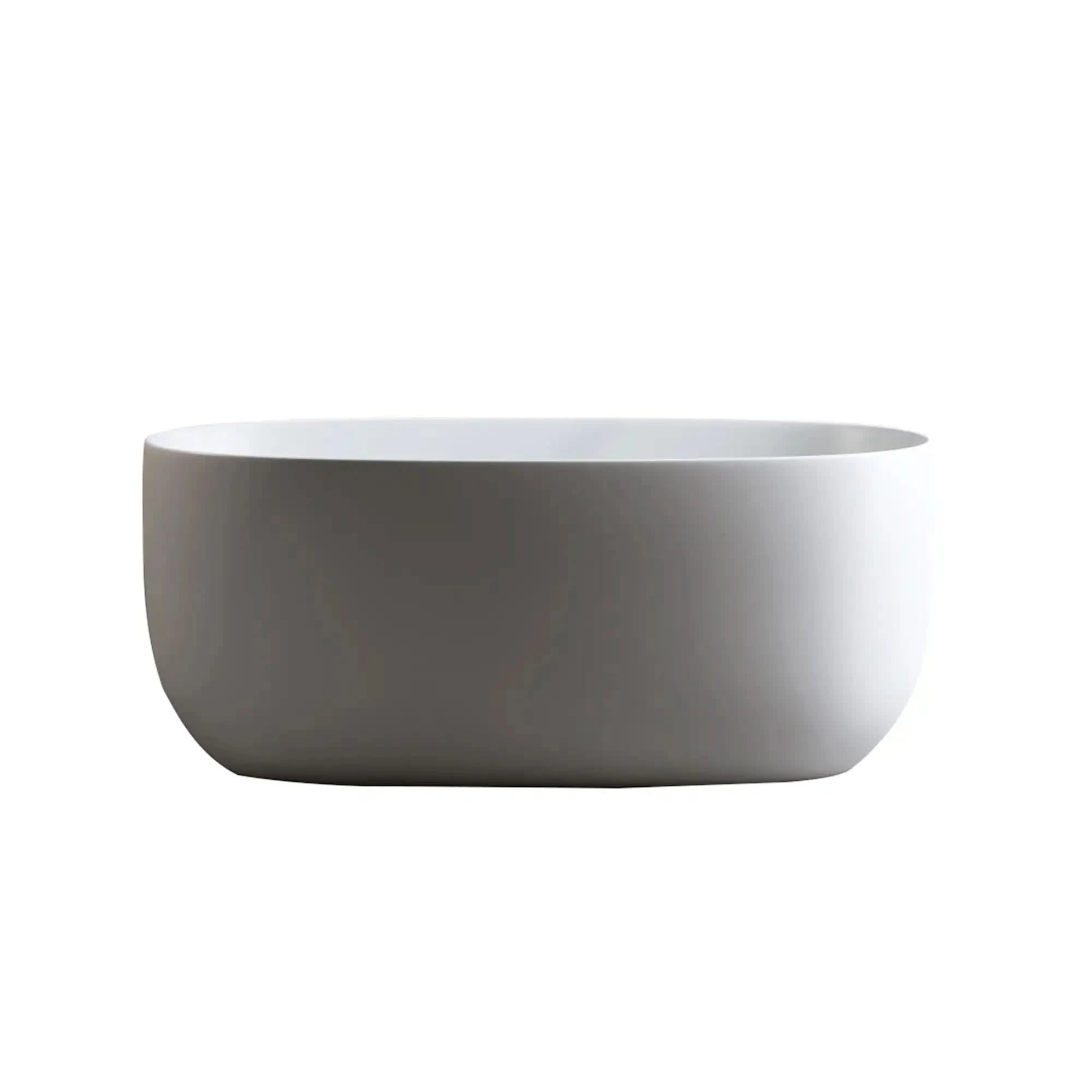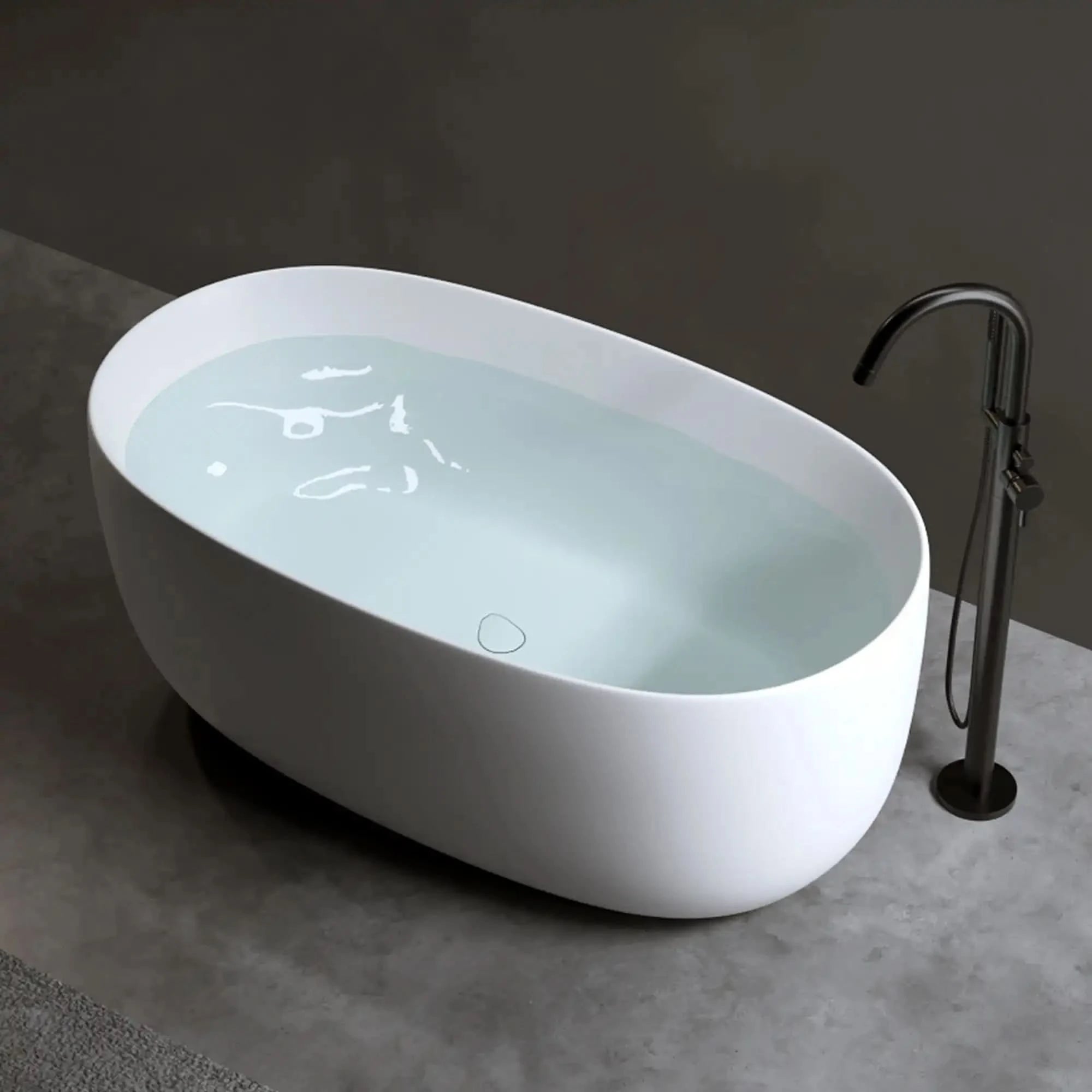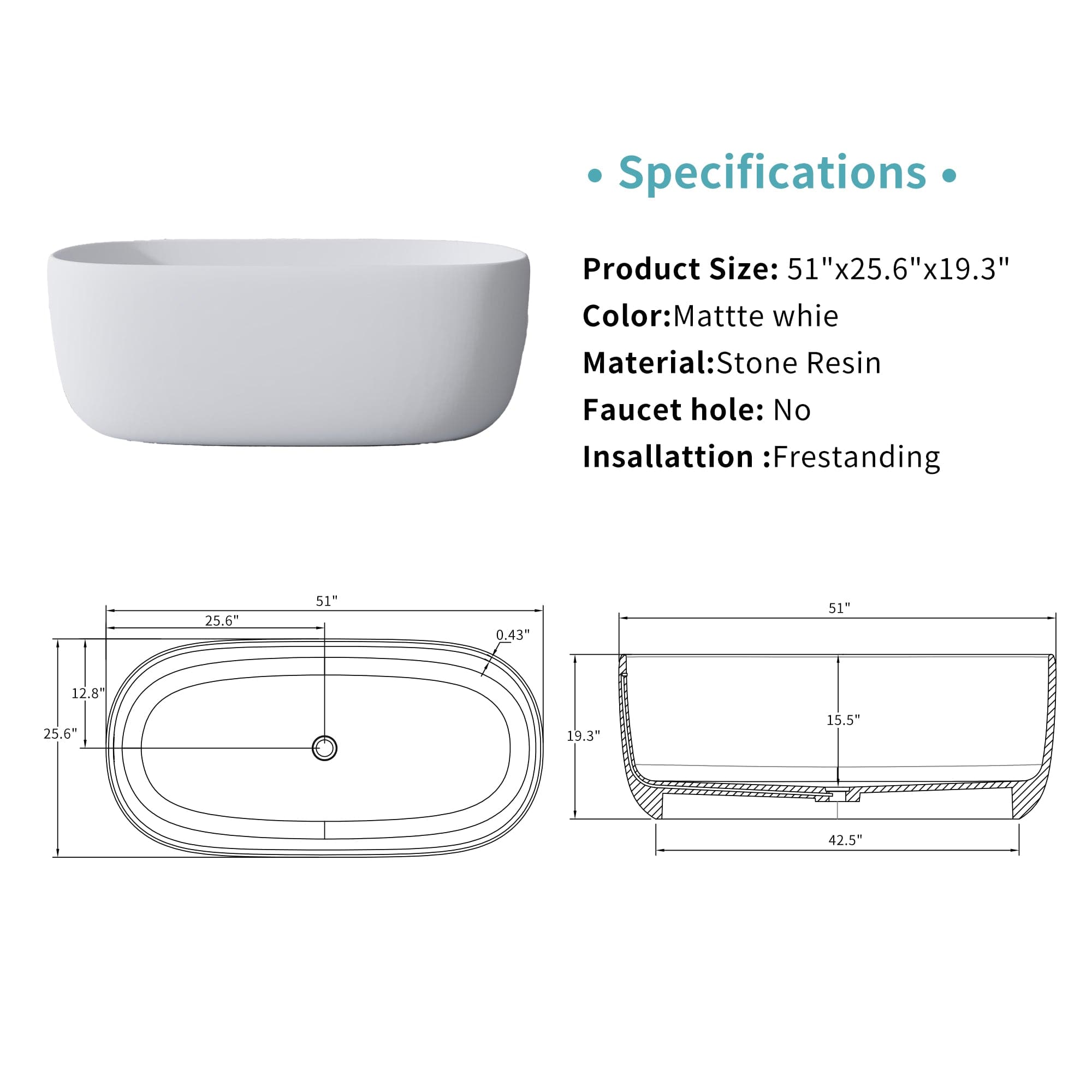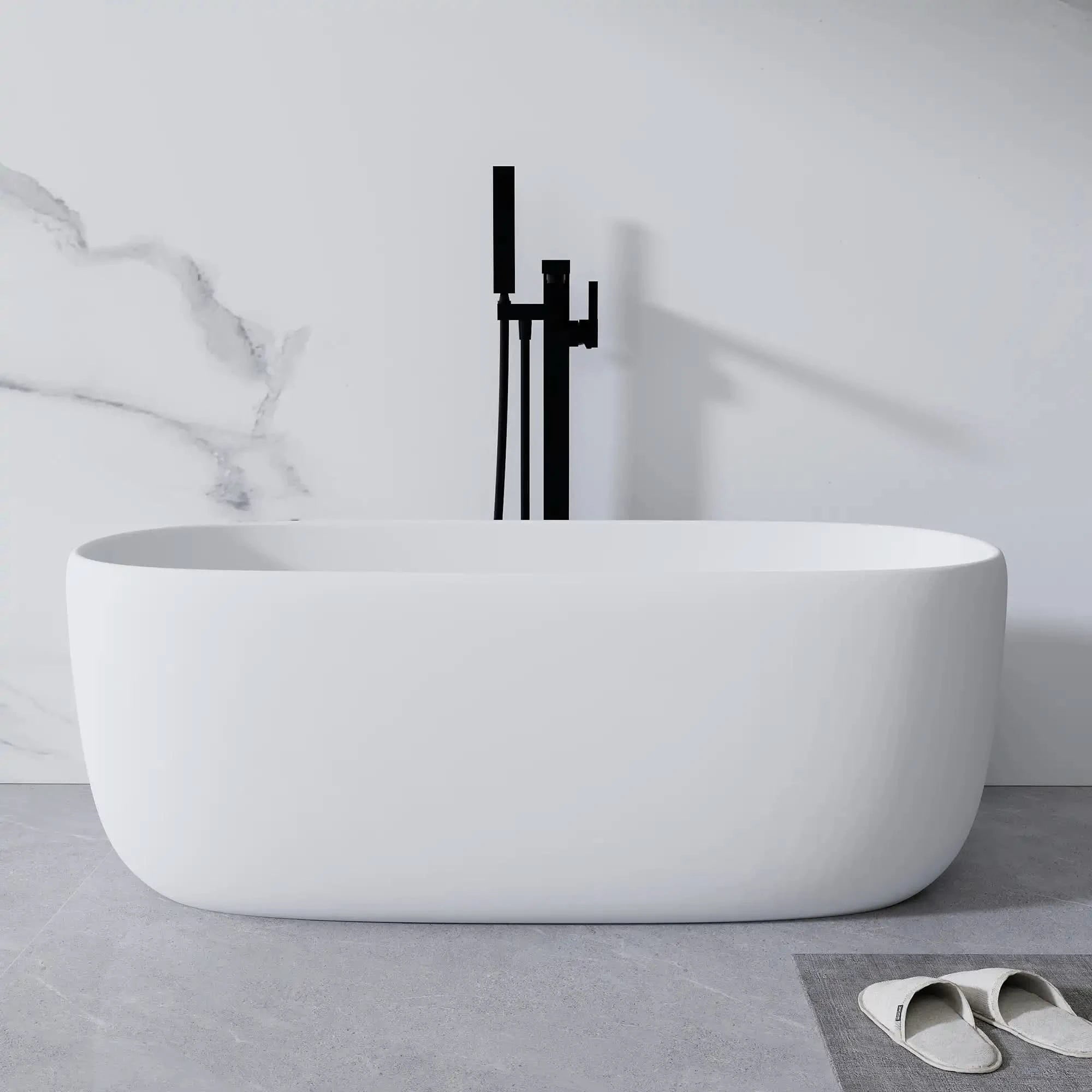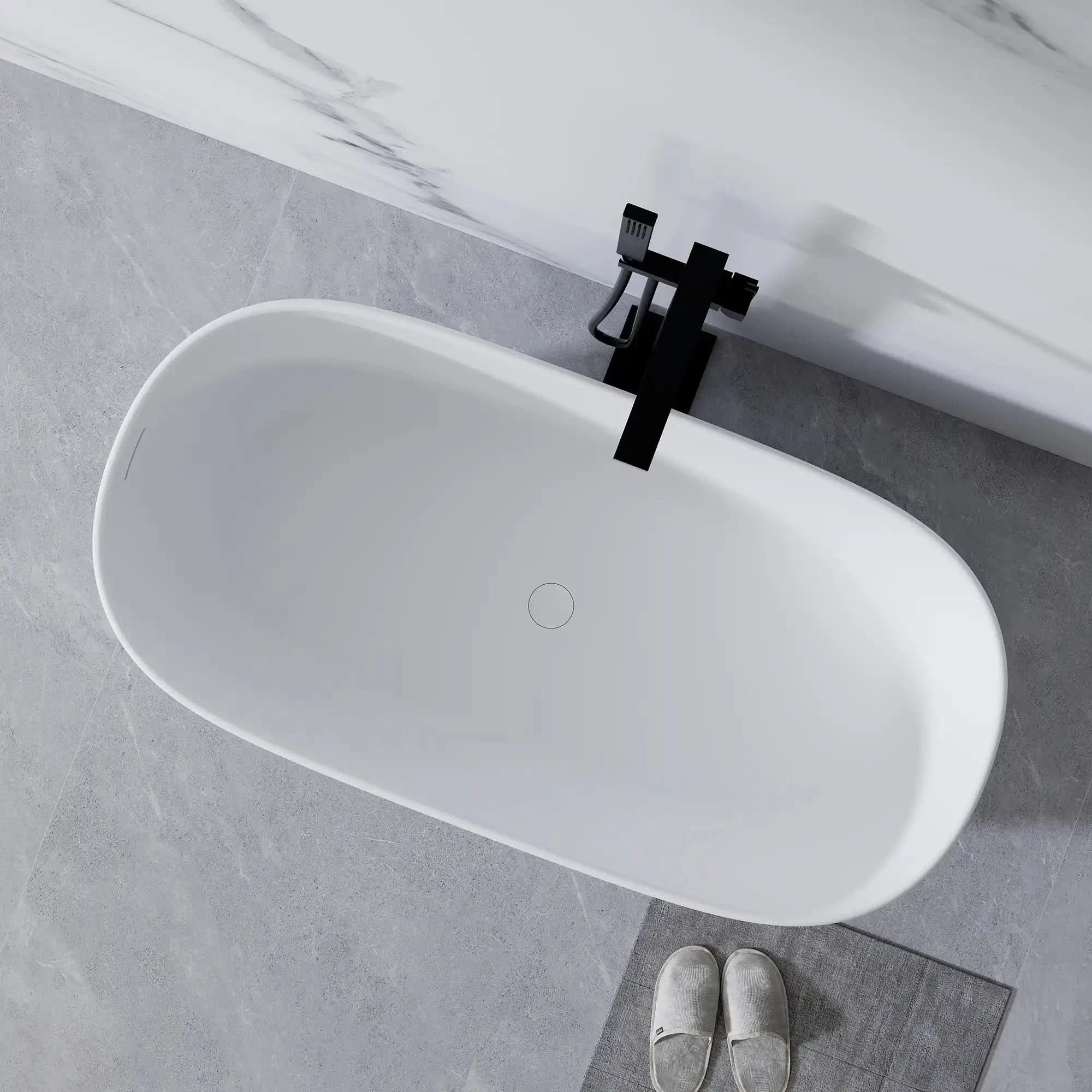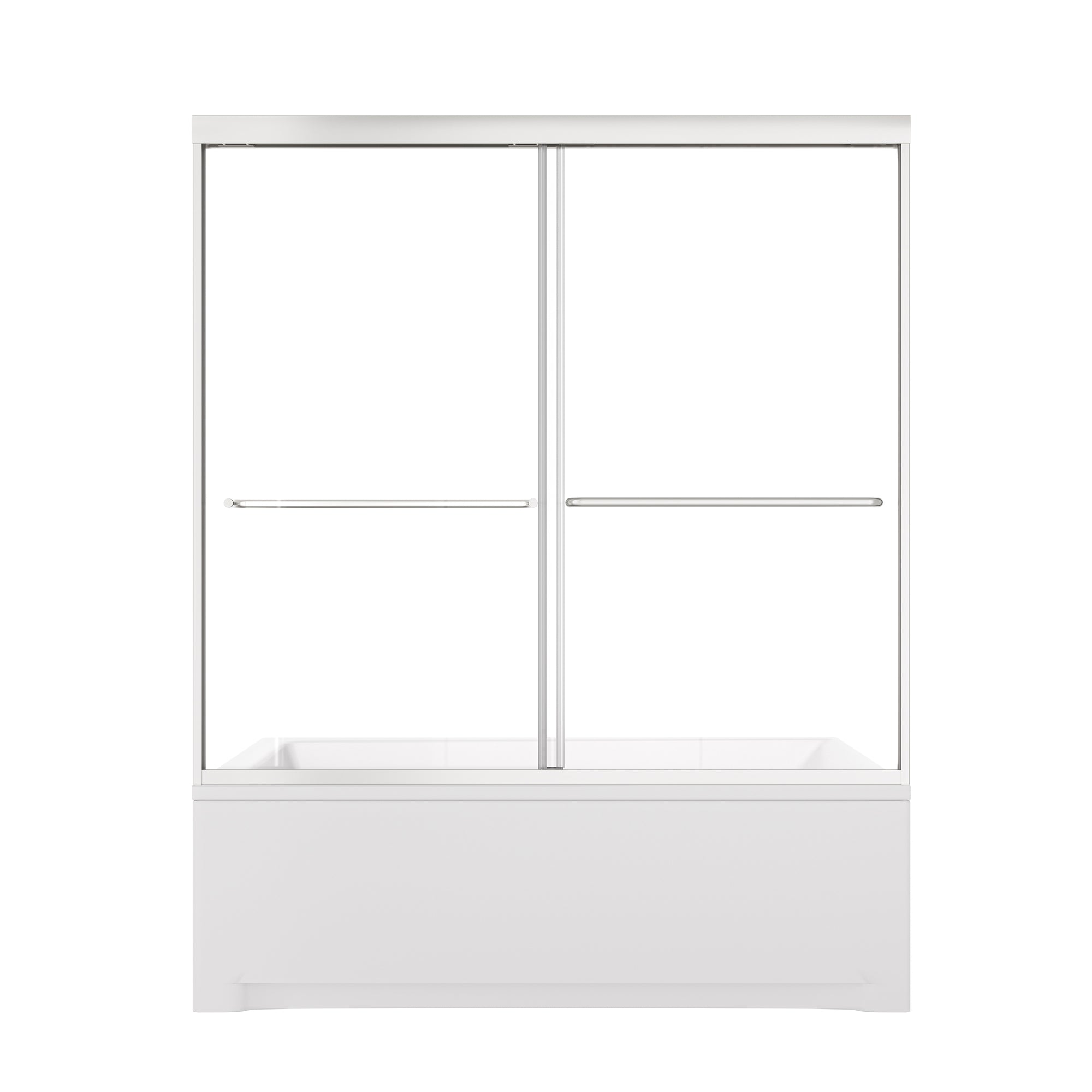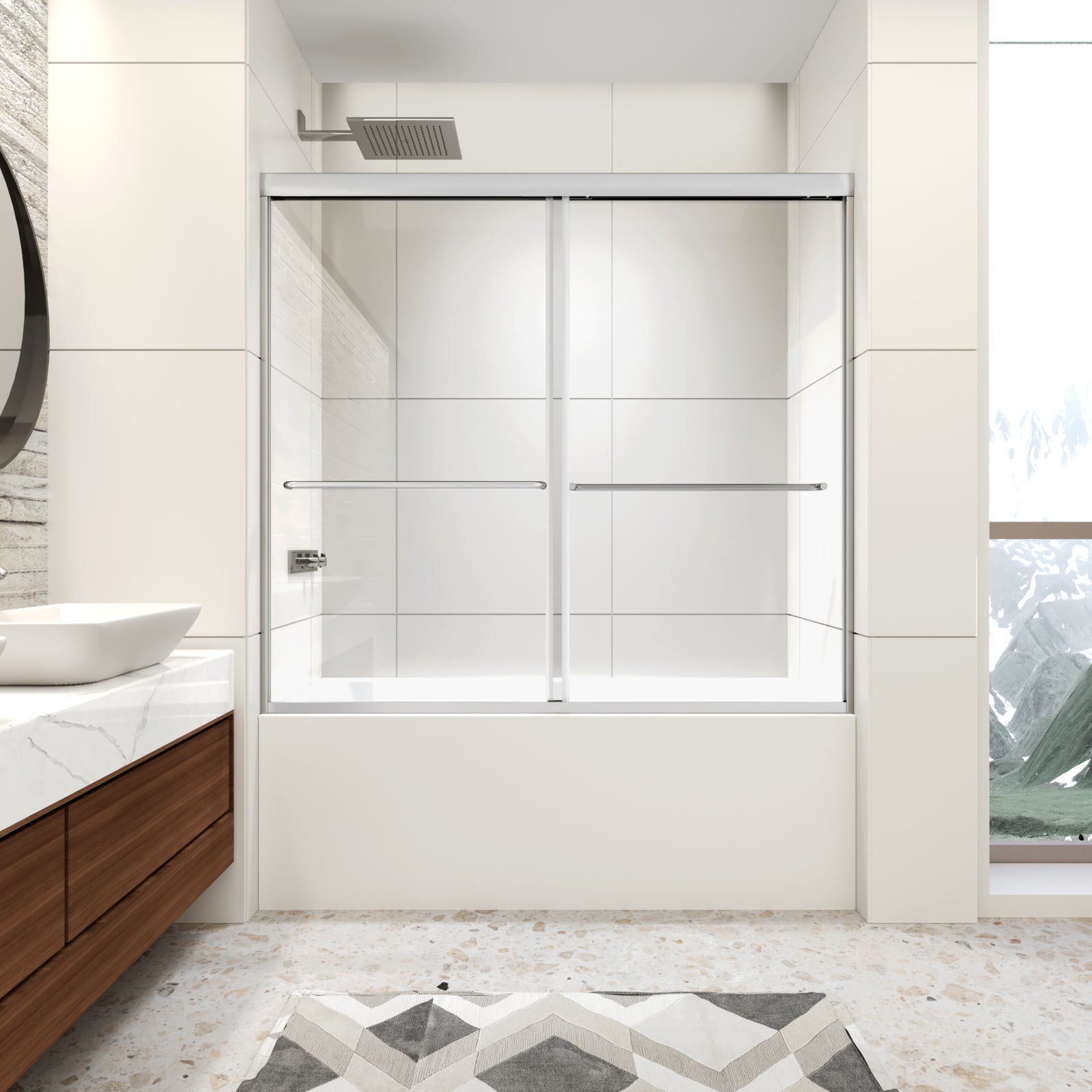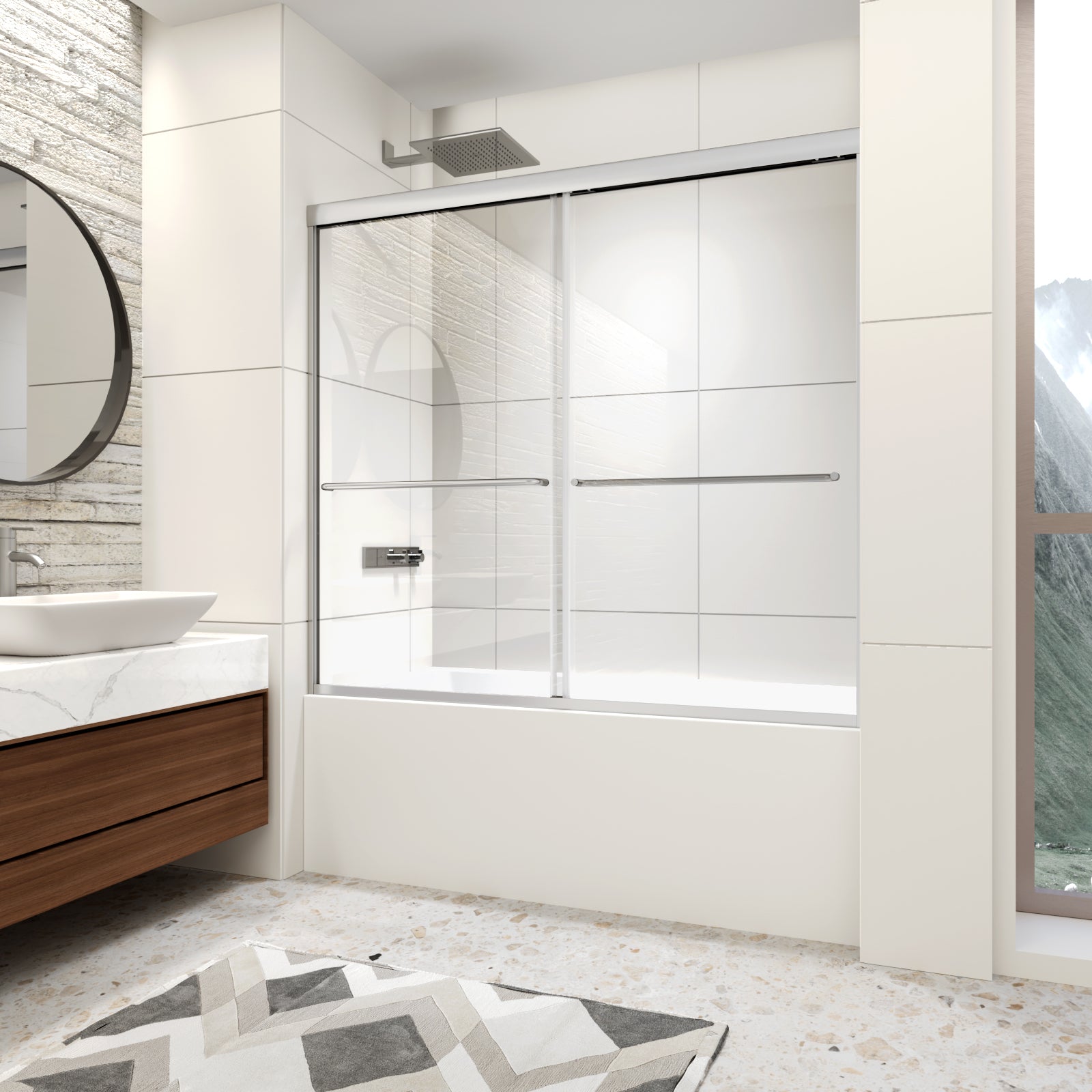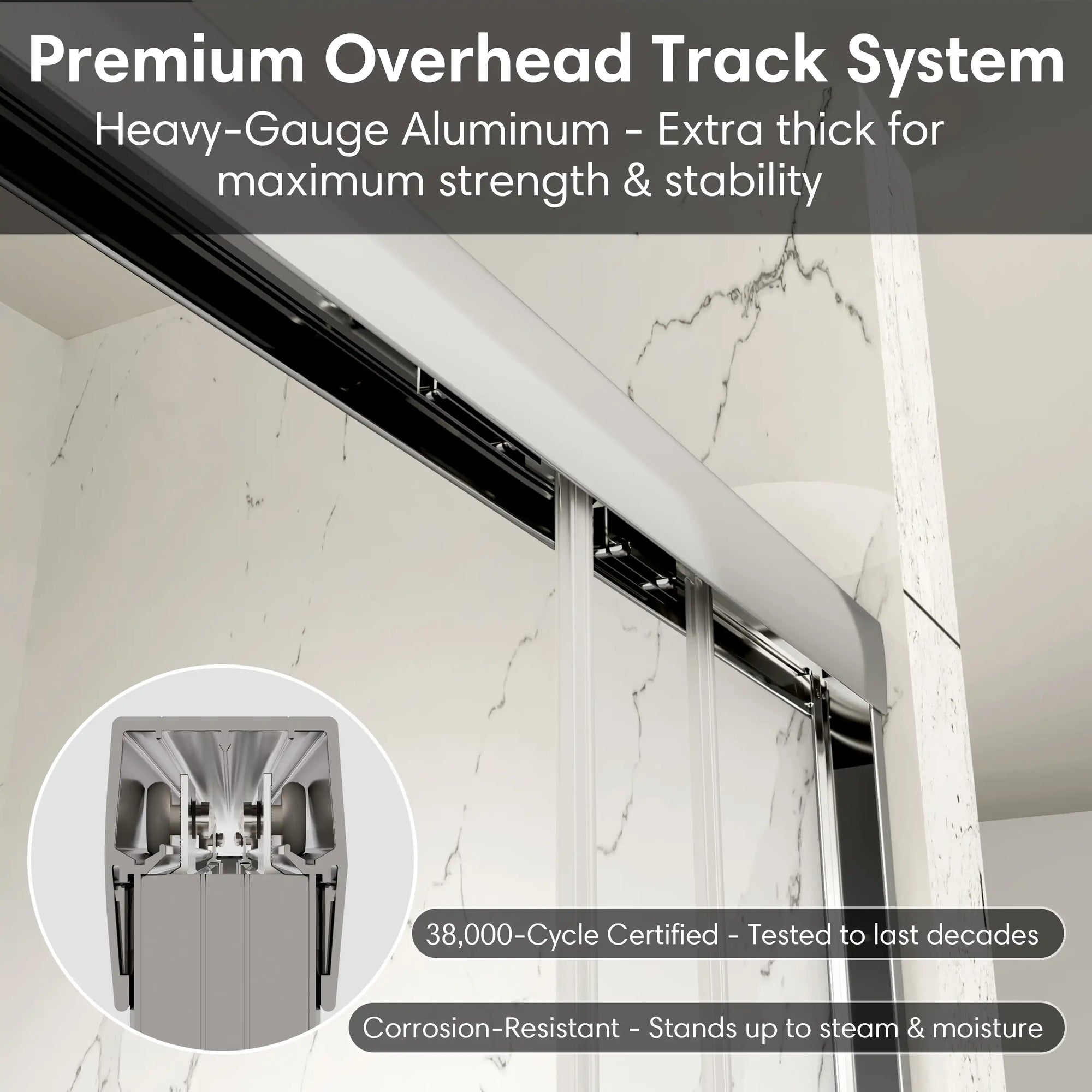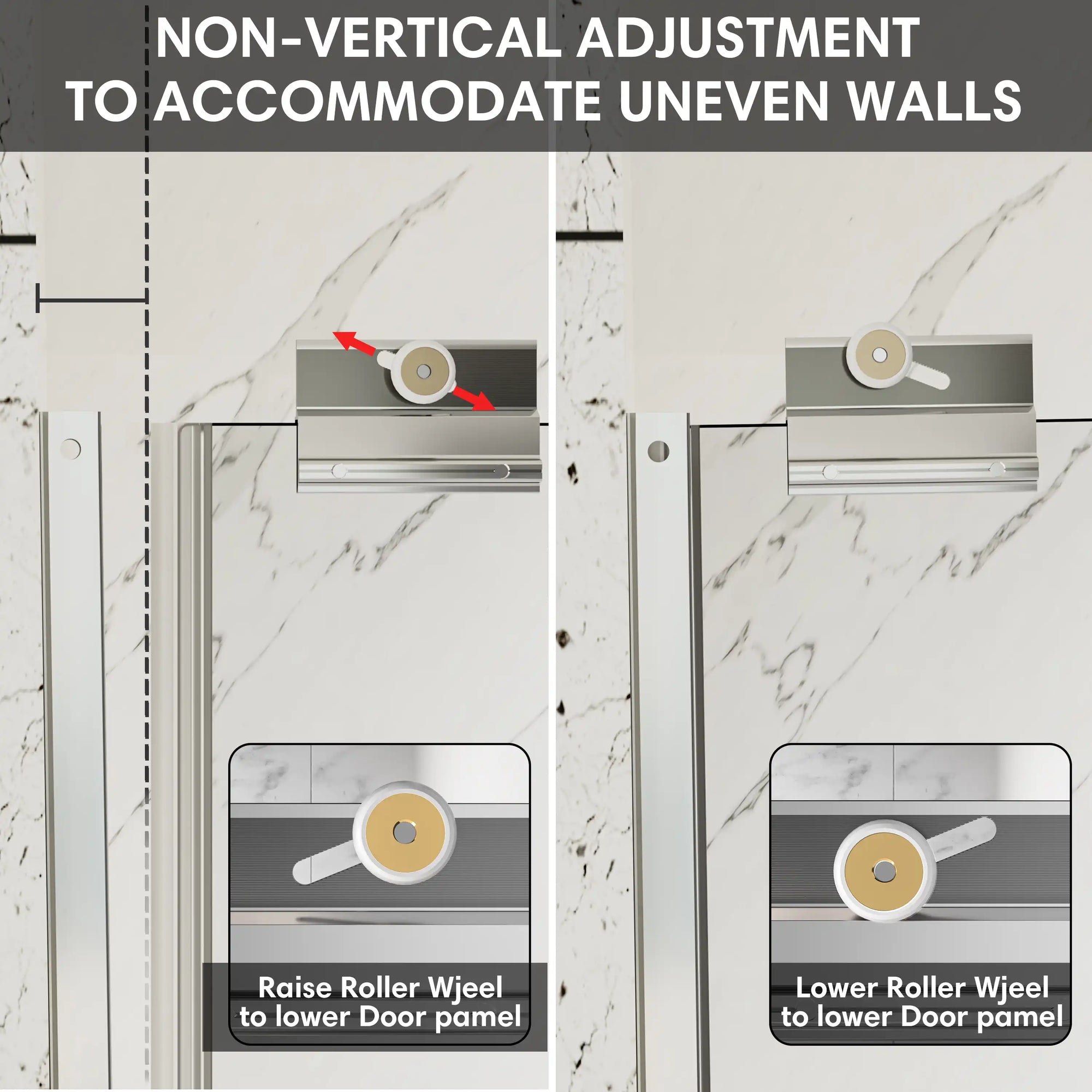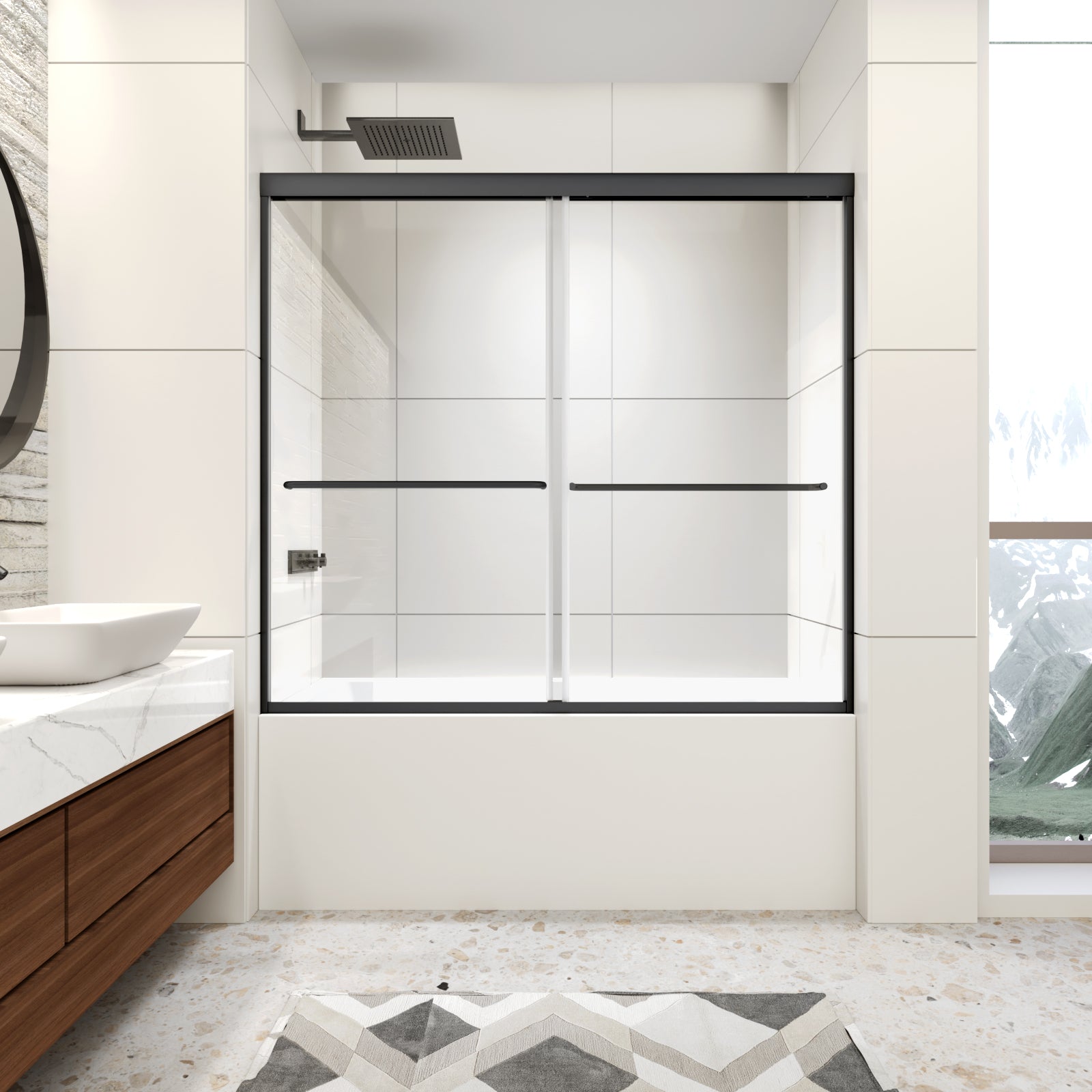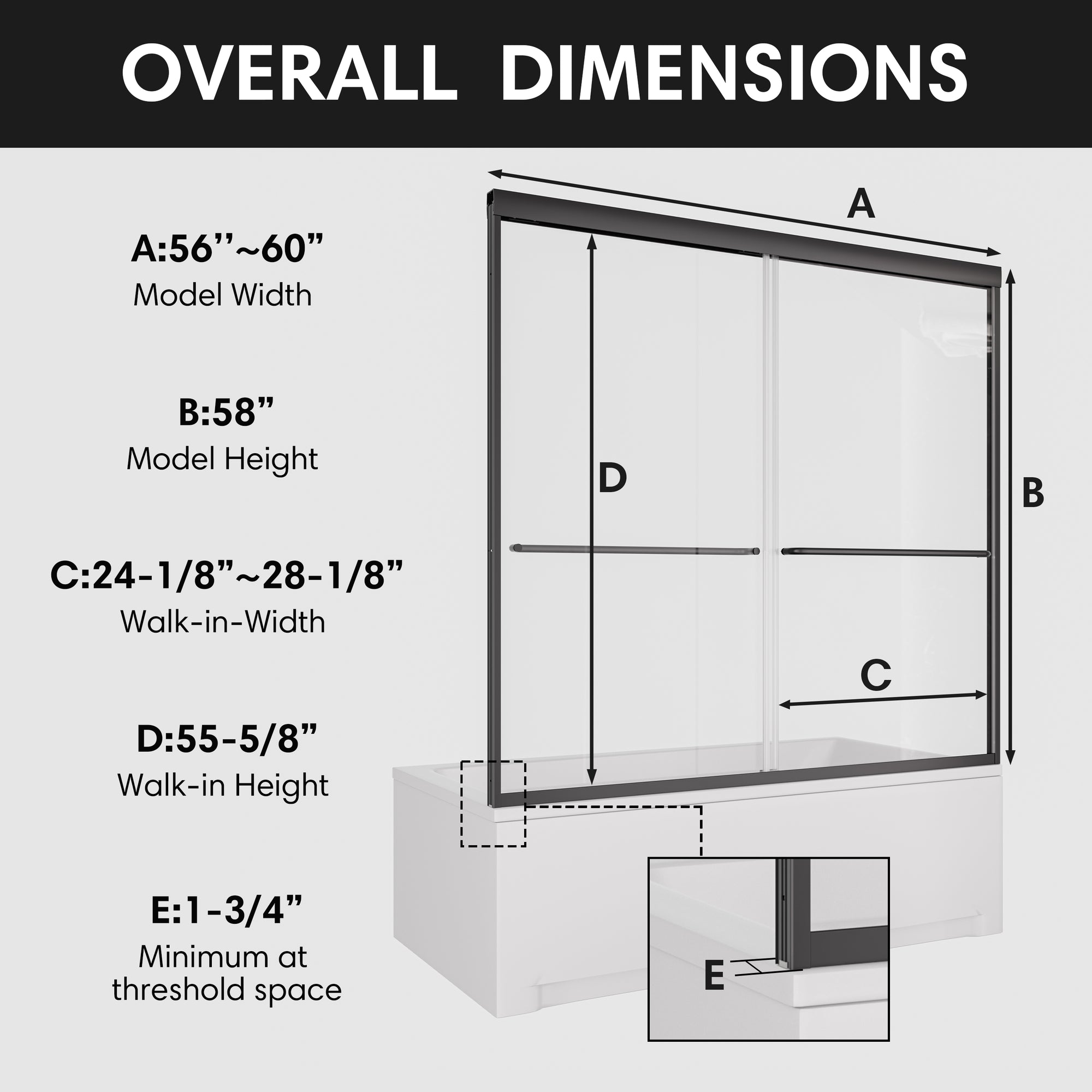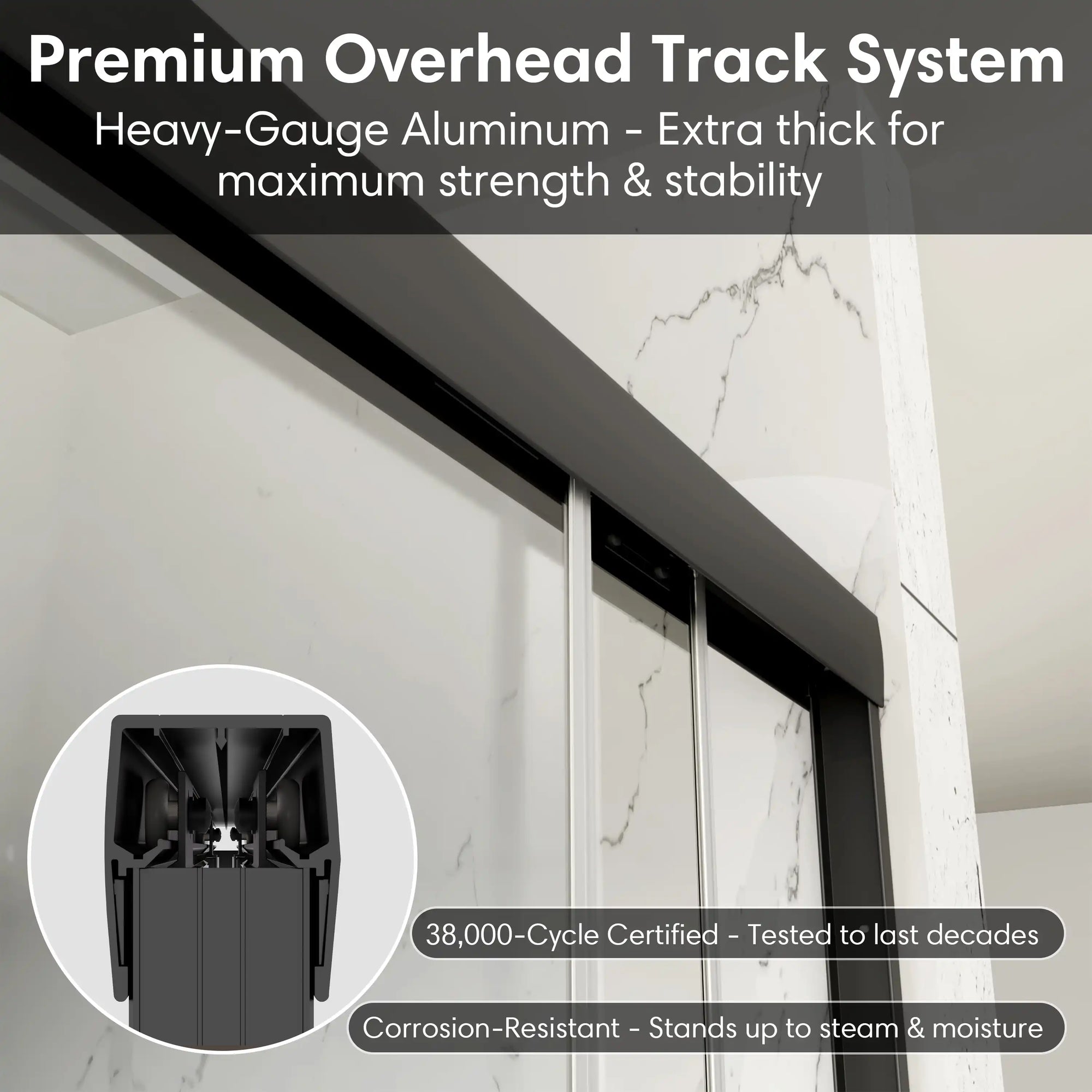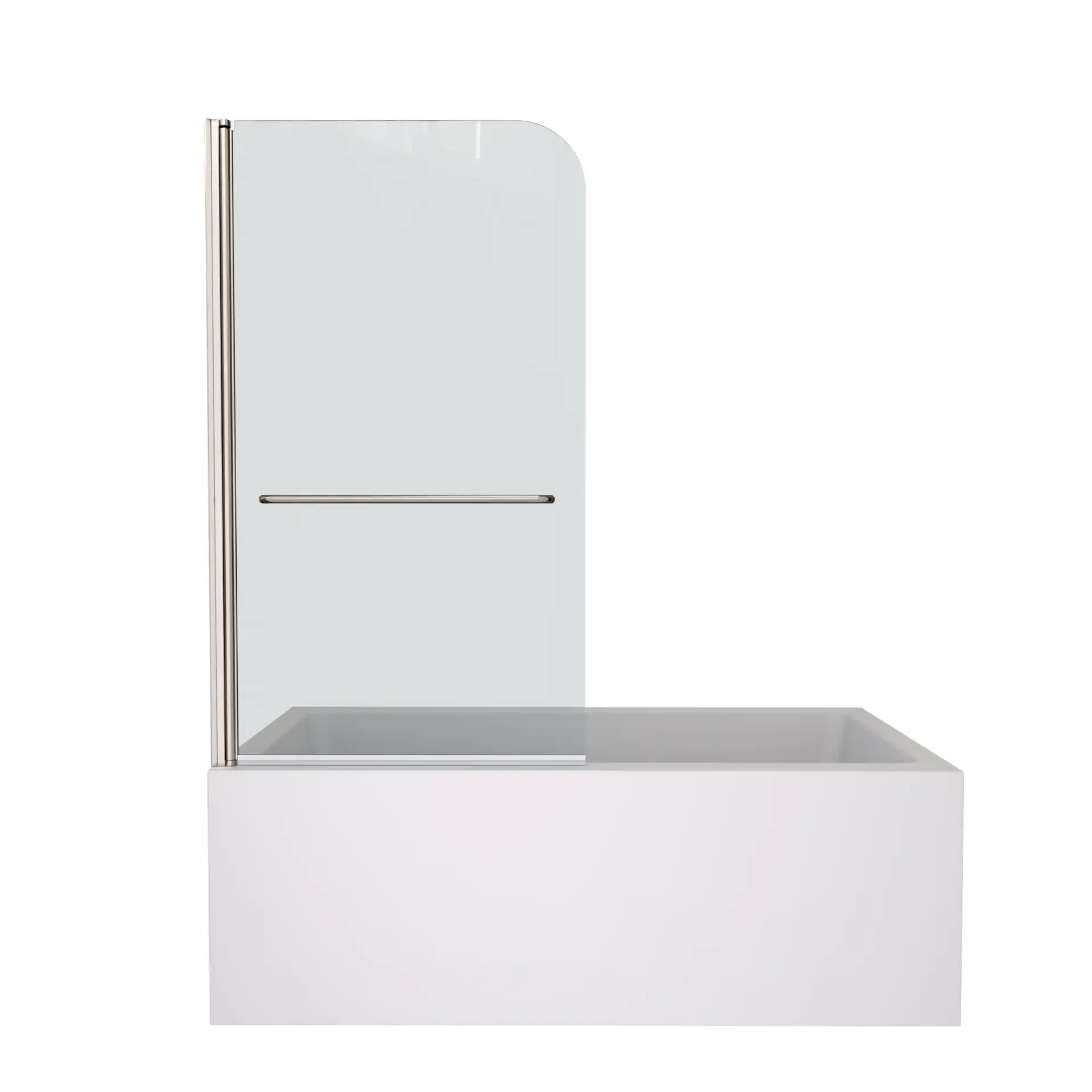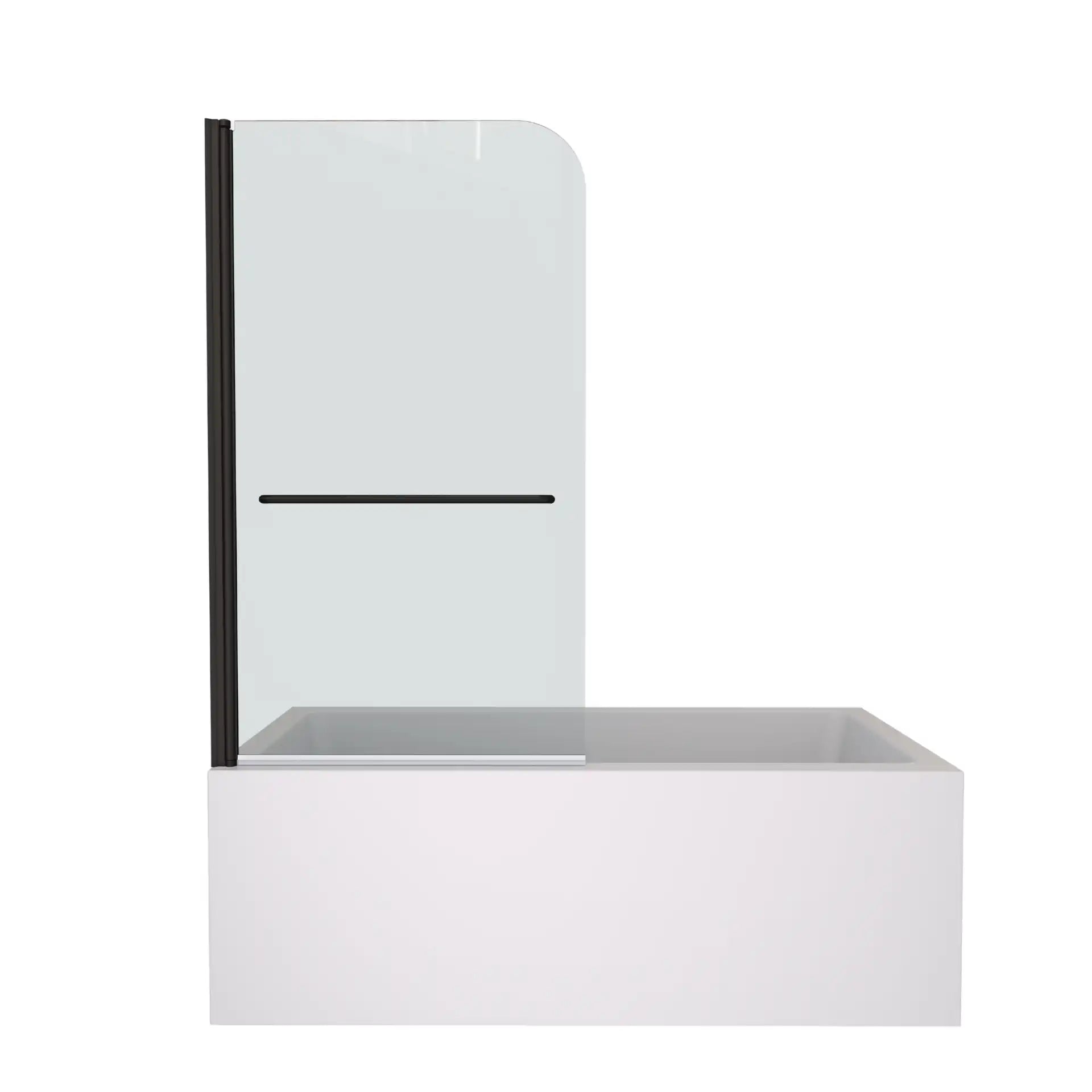Few things in home design shout “luxury” like a freestanding bathtub. They conjure visions of deep soaks, spa-like escapes and architectural elegance. But here’s the secret: You don’t need a five-figure budget to get that gorgeous centerpiece. With wise selections of materials, styling, and space planning, you can have the luxury of a freestanding bathtub without flushing cash down the drain.
This guide will walk you through the psychological allure of freestanding tubs, economical material options, space-gobbling tricks and styling hacks that deliver the most bang for your buck. Also, we’ll dive into how to invest smartly, so your tub is always a timeless asset. Want to turn your bathroom into a serene sanctuary—and not break the bank doing it? Let’s dive in.
Table of Contents:
- The Psychological Appeal of Freestanding Tubs: Why They Feel Like a Splurge
- Material Hacks: Acrylic vs. Cast Iron – Where to Cut Costs Wisely
- The "Wow" Factor on a Dime: Strategic Styling to Elevate Your Tub
- Space-Saving Sleight of Hand: Small Bathroom? No Problem!
- Conclusion
- FAQ
The Psychological Appeal of Freestanding Tubs: Why They Feel Like a Splurge (Even When They’re Not)
A freestanding bathtub is certainly indulgent — almost like a sculptural centerpiece in a gallery. Freestanding designs contrast sharply with built-in tubs, which can meld into the walls. They are not merely for the bath, they ooze relaxation and luxury, and even a little rebellion against dragging ordinary bath rituals.
Why do we love them so much? It's psychological. A freestanding tub isn’t merely a utilitarian fixture; it’s a statement. It takes you to high-end spa retreats, historic clawfoot tubs in Parisian apartments or glossy magazine spreads of perfectly styled bathrooms. Even in small or modest spaces, simply adding a freestanding design elevates the overall room instantly, leading the mind to think your soak is that much more luxurious than it really is.
The good news? The less expensive acrylic or composite tubs today mimic that same lavish look, without the expense of cast iron or stone. Sleek, contemporary silhouettes convey boutique-hotel glamour, while rounded arcs pay homage to vintage sophistication.
In order to leverage this psychological mechanism:
-
Strategic Placement: Consider placing your tub close to a window to bath in natural light for added relaxation. Or make it a centerpiece against a textured wall to make the most of its visual impact.
-
Hardware Matters: A matte black or brushed gold freestanding bathtub faucet can turn even an inexpensive tub into a statement piece. Vintage cross handles? Instant old-world charm.
By learning why freestanding tubs feel so special — and how you can work to enhance that effect — you can create a bathroom that looks like a high-end getaway and feels like one, too, without paying the high-end price. Because luxury isn’t always based on how much you spend — it’s on how you create it.
Material Hacks: Acrylic vs. Cast Iron – Where to Cut Costs Wisely
The material of your freestanding bathtub plays a significant role in its cost, maintenance needs, and longevity. While cast iron and stone bathtubs exude timeless quality and sophistication, they often come with premium price tags. Acrylic, fiberglass, and composite alternatives offer an affordable route to luxury without sacrificing the essential qualities of a great bathing experience.
Acrylic bathtubs are a popular choice due to their numerous advantages, especially for homeowners who are looking for a cost-effective solution that still delivers a luxurious and durable product.
Cast iron bathtubs are a classic choice, and for good reason. They're known for their durability, heat retention properties, and timeless look.
To help you make an informed decision, here's a detailed comparison of acrylic and cast iron bathtubs:
| Comparison Aspect | Acrylic Bathtub | Cast Iron Bathtub |
|---|---|---|
| Cost | Affordable, mid-range price | Premium price, more expensive |
| Weight | Lightweight, easy to install | Heavy, requires reinforced flooring |
| Heat Retention | Good, keeps water warm for a decent time | Excellent, superior insulation for hot baths |
| Maintenance | Easy to clean and maintain | Durable but requires some maintenance |
| Installation Complexity | Simple, does not need structural reinforcement | Complex, requires structural reinforcement |
| Aesthetic Appeal | Varied options, can mimic expensive materials | Classic and timeless look |
| Durability | Durable, but not as robust as cast iron | Very durable, lasts decades with proper care |
For most homeowners, acrylic bathtubs strike the perfect balance—offering durability, elegance, and a mid-range price tag. If you love the look and feel of a cast iron bathtub but are looking for something more budget-friendly, consider acrylic bathtubs with a textured finish which can emulate the depth and richness of cast iron without the added weight and cost.
Ultimately, the choice between an acrylic or cast iron bathtub will depend on your personal preferences, budget, and the specific needs of your bathroom. Carefully weigh the advantages and drawbacks of each material to make the best choice for your home.

The "Wow" Factor on a Dime: Strategic Styling to Elevate Your Tub
A bumper sticker-worthy bathtub doesn’t have to be expensive: Minor, inexpensive upgrades can give even a freestanding tub the impression of a designer retreat. Here’s how to achieve high-end luxury without the luxury price tag:
✨ Texture Play — Different materials create depth and tactile interest. Try a woven jute bath mat, a reclaimed wood stool to hold bath essentials or a simple stone tray for soaps — affordable finds that instantly class up the joint.
✨ Lighting Drama — Avoid pricey chandeliers. One chic pendant light (even thrifted!) or a few strategically placed candles in elegant holders add soft, spa-like ambience for hardly any money.
✨ Greenery & Art — A low-maintenance, humidity-loving plant adds freshness with minimal costly upkeep. Framed vintage prints or DIY art give personality at a fraction of gallery prices.
✨ Layered Linens — A pile of plush, neutral towels (watch out for sales or discounts from home brands) rolled or folded in a rustic basket or budget-friendly ladder shelf has that easy, boutique hotel vibe.
Bonus Design Budget Hack: Replace standard hardware with inexpensive matte black or brushed gold accents — such as faucet handles, towel bars or a ho-hum mirror frame — to give your tub area a custom-designed touch without a complete remodel.

Space-Saving Sleight of Hand: Small Bathroom? No Problem!
Many think freestanding bathtubs require sprawling bathrooms. Not true! Through strategic placement and creative shapes, you can squeeze a statement tub into small quarters.
Space-Saving Moves:
✔ Slim & Deep Designs – Go with a slimmer but deep soaking tub (ex: a Japanese style tub) for all the de-stressing without the floor-hogging.
✔ Wall-Hugging Placement — Slide the tub along one sidewall to clear passageways.
✔ Corner Tubs – Freestanding corner units use awkward angles wisely.
The trick? Be exacting—allow for at least 30” clearance around the tub—and think about streamlined faucets that mount directly to the wall to liberate real estate.

Conclusion
A freestanding bathtub doesn’t have to break the bank. By understanding the power of design to tug the heartstrings, selecting cost-savvy materials, making the most of space, styling with purposeful intent and putting your money where it matters in terms of fabulous, you can create a bathroom that feels luxuriant — without losing the will to live financially.
Prepared to transform your daily soak into a retreat? That tub of your dreams (that won’t break the bank) is in sight.
FAQ
Q: Do acrylic freestanding tubs look cheap?
A: Not at all! High-quality acrylic mimics stone or metal at a glance. Pair with refined hardware for upscale appeal.
Q: Can I install a freestanding tub myself?
A: Possibly—if it's lightweight (like acrylic). But plumbing adjustments may require a pro for leak-proof results.
Q: What’s the best shape for small bathrooms?
A: Slim oval or rectangular tubs (around 55-60” long) fit snugly without sacrificing soak depth.
Q: How do I keep my tub looking new?
A: Weekly wipe-downs with mild soap (avoid abrasives!) preserve gloss. For stubborn stains, baking soda paste works wonders.
Q: Will a freestanding tub increase my home’s value?
A: Often, yes.
Will a Freestanding Bathtub Make Your Home Feel More Expensive?
Is This the Best Freestanding Bathtub for Your Dream Bathroom? Find Out!
Freestanding Bathtub Design Trends: How to Choose the Perfect Tub for Your Dream Bathroom

